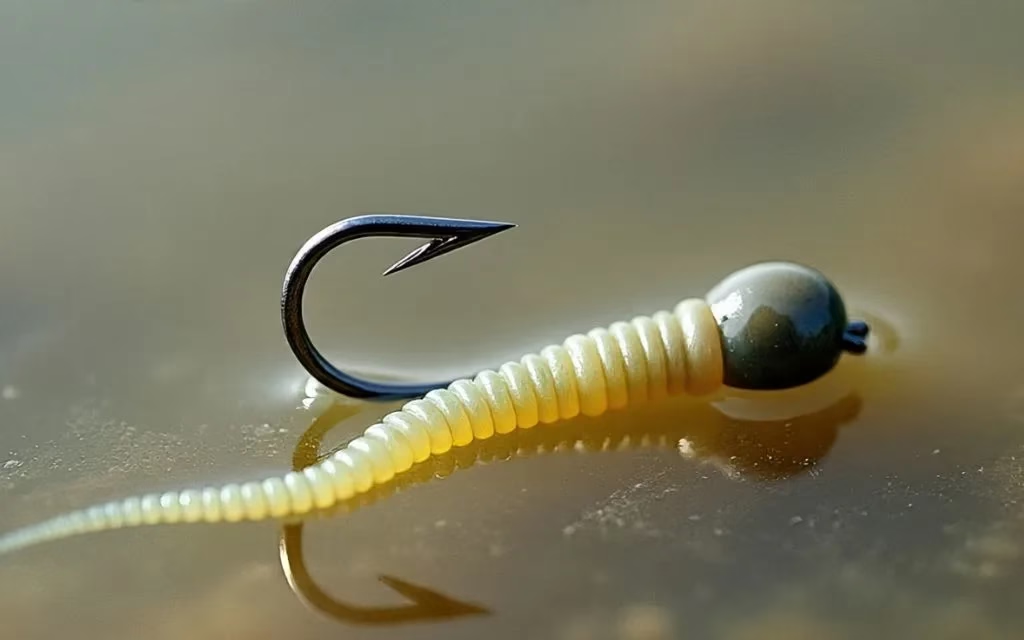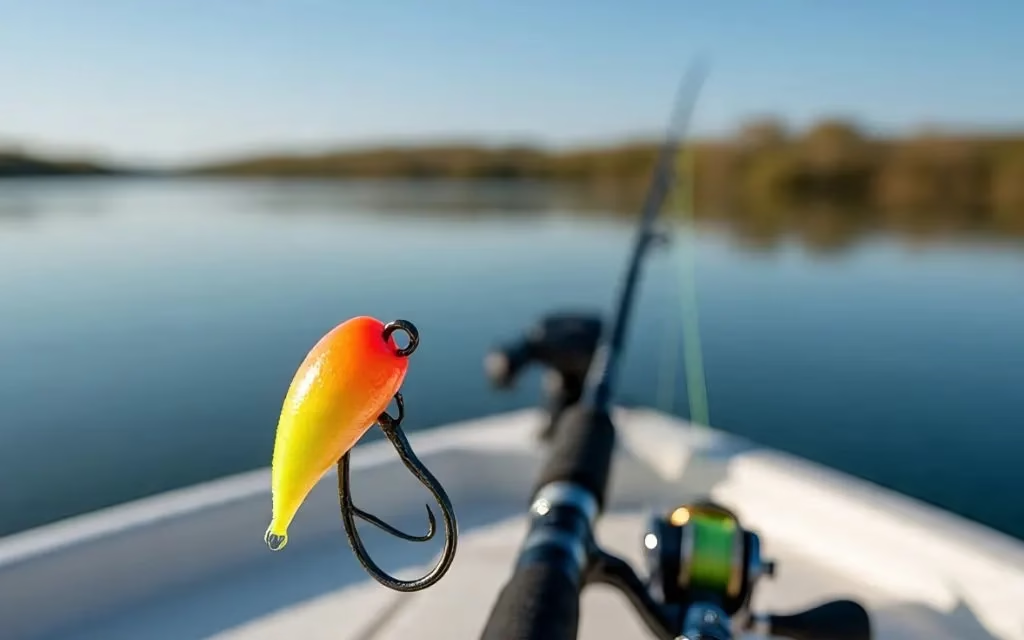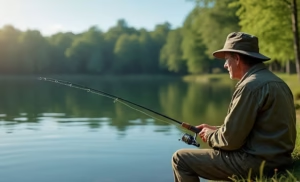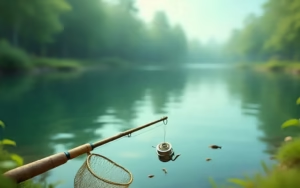Texas Rig Hook is a must-have for bass fishing and one of the best ways to catch fish in thick cover. Because it doesn’t have any weeds, anglers may present soft toys naturally without getting stuck all the time. This makes it great for fishing in nearly any condition. The Texas rig can handle anything, from fishing in shallow water to exploring depths of up to 70 feet.This method is simple enough for beginners to learn but yet advanced enough for pros. If you fish in small ponds, big lakes, creeks, or reservoirs, learning how to use the Texas rig hook should be one of your top goals.
Why the Texas Rig Hook is So Effective
Texas Rig Hook is well-known because it can be used in many different ways and doesn’t get caught in weeds when going through thick cover.The Texas rig lets you fish with confidence in grass beds, submerged wood, rocky areas, and docks, unlike open-hook setups that always get stuck.Another reason why fishermen like this configuration is that it works with a lot of different soft plastic lures.The Texas rig works with practically any soft plastic bait, from straight-tail worms and ribbon tails to creature baits and crawfish imitations. This flexibility makes it a rig that can be used in both shallow and deep water all year round.
How to Rig a Texas Rig Hook
If you have the necessary parts—a bullet-shaped sinker, a Texas rig hook (either an offset worm hook or an EWG hook), and a soft plastic bait—it’s easy to set up a Texas rig.First, put the hook tip into the worm’s nose about a quarter of an inch deep and draw it out the side. Pull the Texas rig hook through until the eye found the worm’s snout, and then turn the hook so that the point is looking the worm’s body retry. endly, line up the texas rig hook with the worm, bend the plastic a small, and put the hook tip in so that the bait is simple.
Selecting the Right Weight for a Texas Rig
Another important part of this rig is the bullet-shaped sinker. The depth of the water, the density of the cover, and the behavior of the fish all affect the weight you choose. When fishing in clear water or shallow water, a lower weight like 1/8 or 1/4 ounce will fall more naturally. If there is a lot of foliage or the water is really deep, bigger weights like 3/8 to 1 ounce work better to get through the cover and to the bottom rapidly.Tungsten weights are far superior than lead weights since they are denser, smaller, and more sensitive.
Texas Rig Setup: Rod, Reel, and Line
You may fish with the Texas rig using either spinning or baitcasting gear, but baitcasting setups are better since they provide you more power and control. A medium-heavy rod that is 7 feet to 7 feet 3 inches long and has a fast action tip is best. If the water is clear, you can use a 12-pound test line. If there is a lot of cover, you should switch to a 20-pound or heavier line so you can draw huge fish out of thick plants.

How to Fish a Texas Rig Hook Effectively
You may fish the Texas rig in several ways depending on the weather. The drag and pause method is a common one. After you cast, let the bait fall to the bottom.Then, carefully pull it with the tip of your rod and stop often. Bass often bite when the bait is still and seems most natural.he hop and swim retrieve is another good way to do it. This makes the bait or crawfish move like they do, which makes bass bite.When fishing in thick cover, always keep your pole at around 10 o’clock so you can set the hook quickly and strongly. Keep an eye on your line.
Texas Rig Modifications for More Bites
Many people who fish change their Texas rig to make it work better. Putting a bobber stop in front of the sinker keeps the weight near to the bait, which makes it easier to get through thick plants. Some fishermen also add rattles or beads to make more noise, which is very effective in dirty water. You can also use scent or dye on your soft plastics to get picky fish to bite.Another change is to use Tex-posing to make the hook go in faster, but this does make it a little more likely to become stuck.
Common Mistakes to Avoid with Texas Rigs
The Texas rig is easy for beginners to use, but there are mistakes you can make that will cost you fish. One mistake is to fix the bait in a way that makes it look unnatural, which makes it less likely to get bites. Another problem is employing a weight that is too heavy for the situation, which makes the bass fall in an awkward way that scares them. Also, if you don’t check your line for nicks after fishing in thick cover, it could break off on your next hookset. Always check your rig and make changes dependent on the weather to have the best chance of success.
When to Use the Texas Rig vs. Other Rigs
In thick foliage and deep cover, the Texas Rig Hook works best. However, there are situations when different rigs might work better. For instance, a Carolina rig is great for covering a lot of ground fast in deeper water, while a wacky rig is great for open water or when bass are under a lot of strain. The most important thing is to determine when to keep using the Texas rig and when to move to something else.
Conclusion
The Texas Rig Hook is still one of the best and most useful ways to catch bass. It is a must-have skill for any angler because it can be used in a variety of situations, works with a variety of baits, and doesn’t get caught in weeds. You can catch a lot more fish if you choose the right hook, weight, and gear and learn how to present them properly. Adding the Texas rig to your collection will give you a proven edge on the water, whether you’re a novice or an expert.




